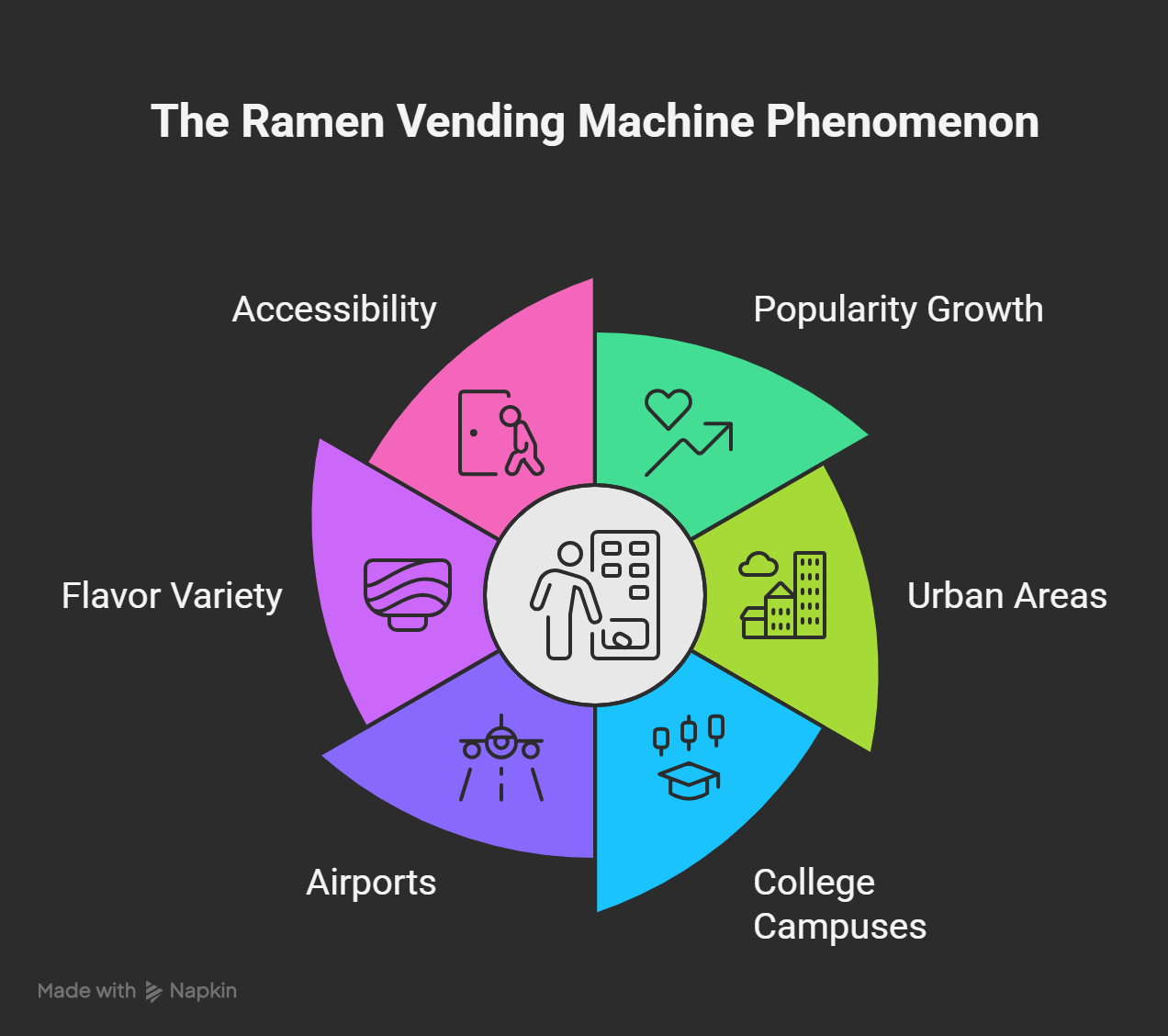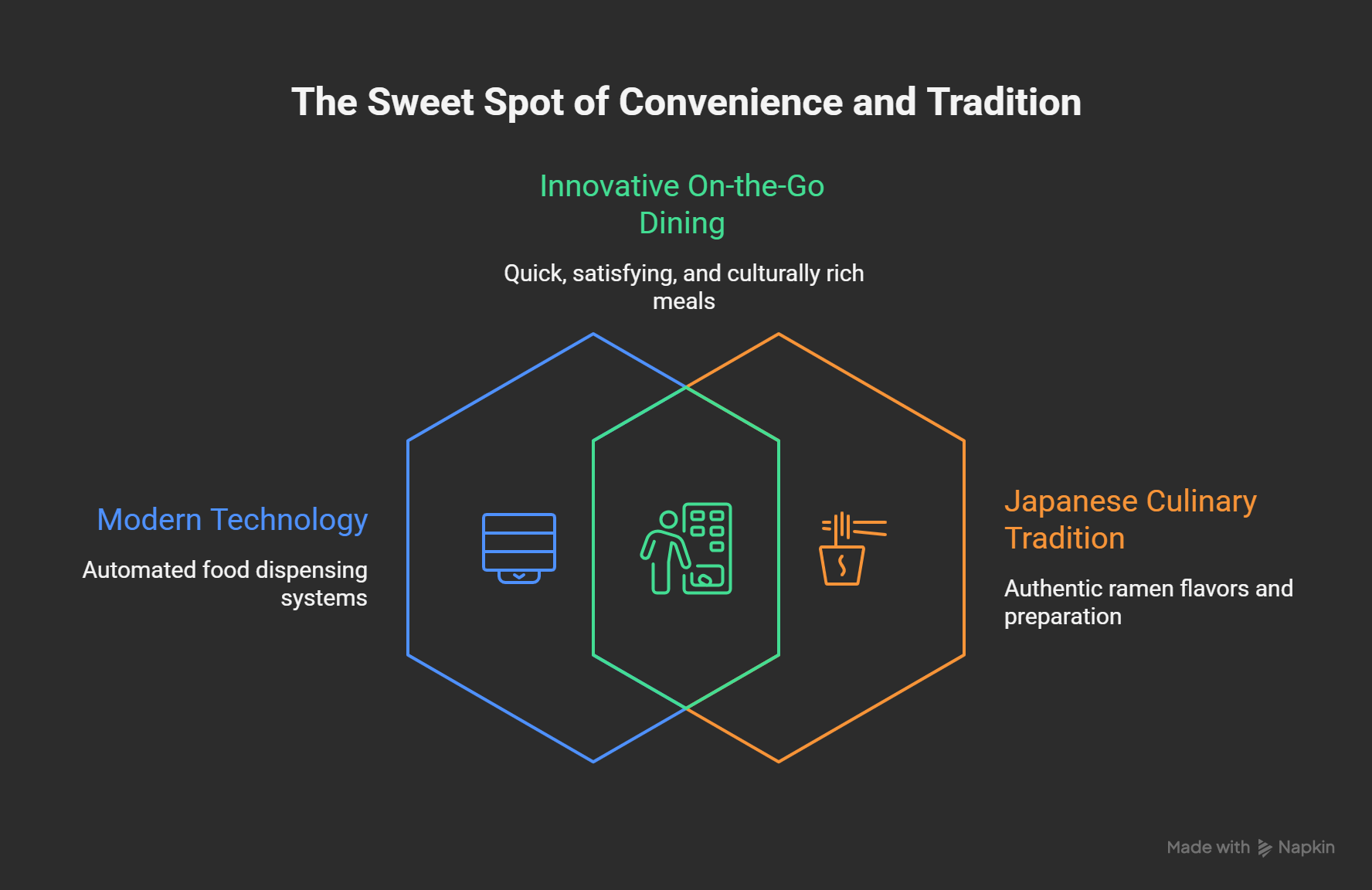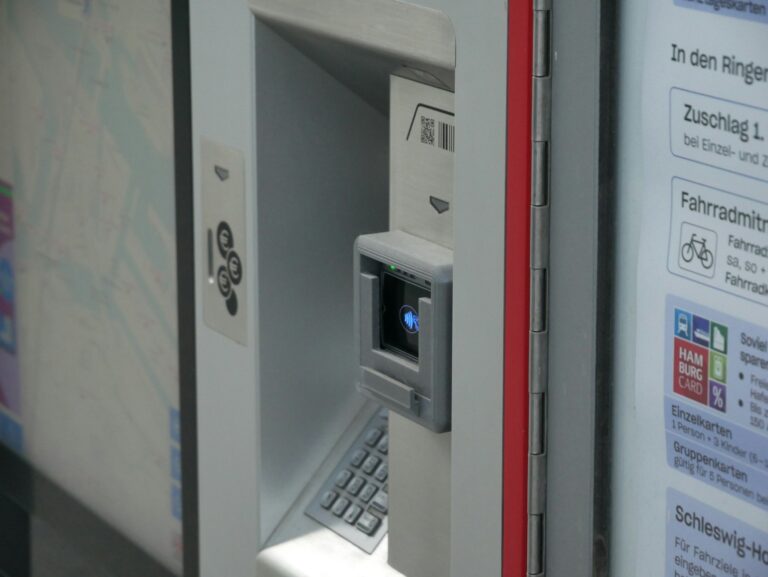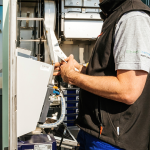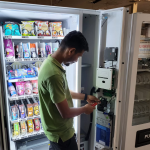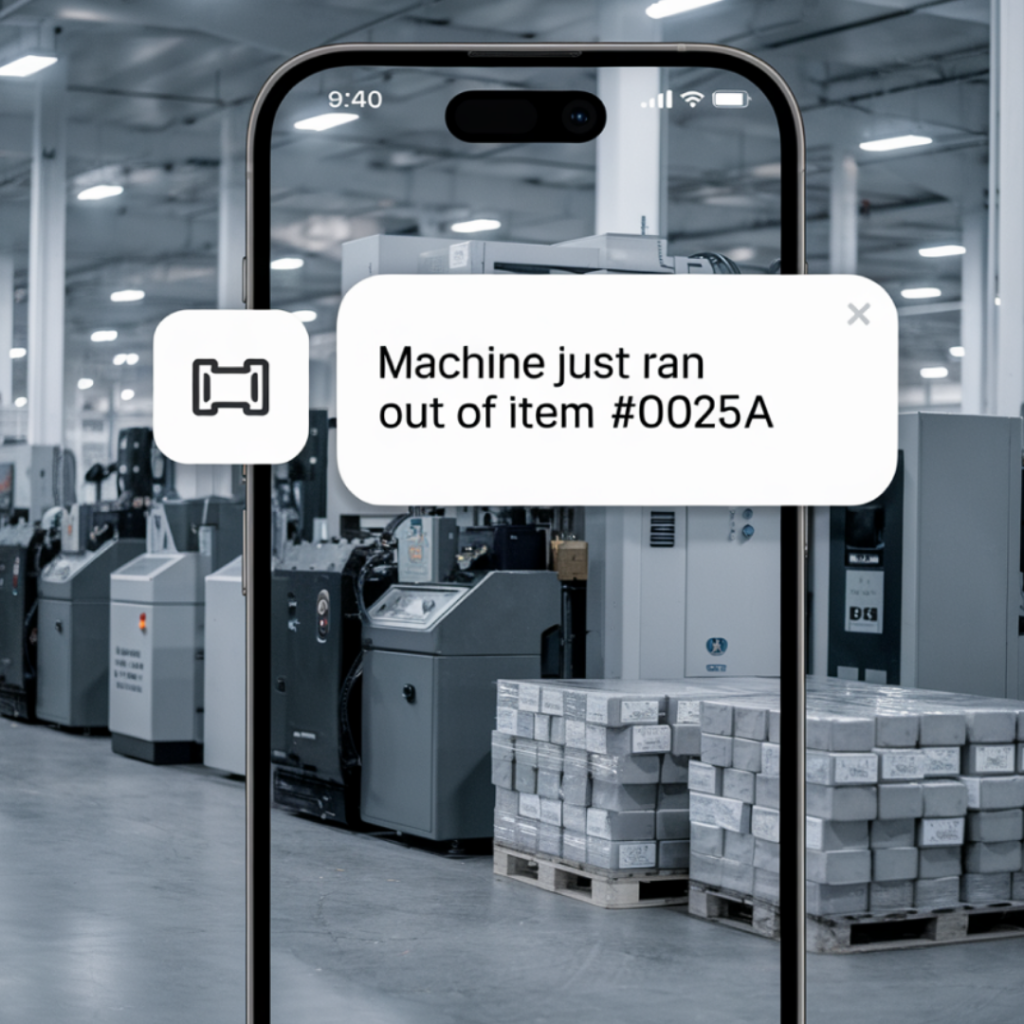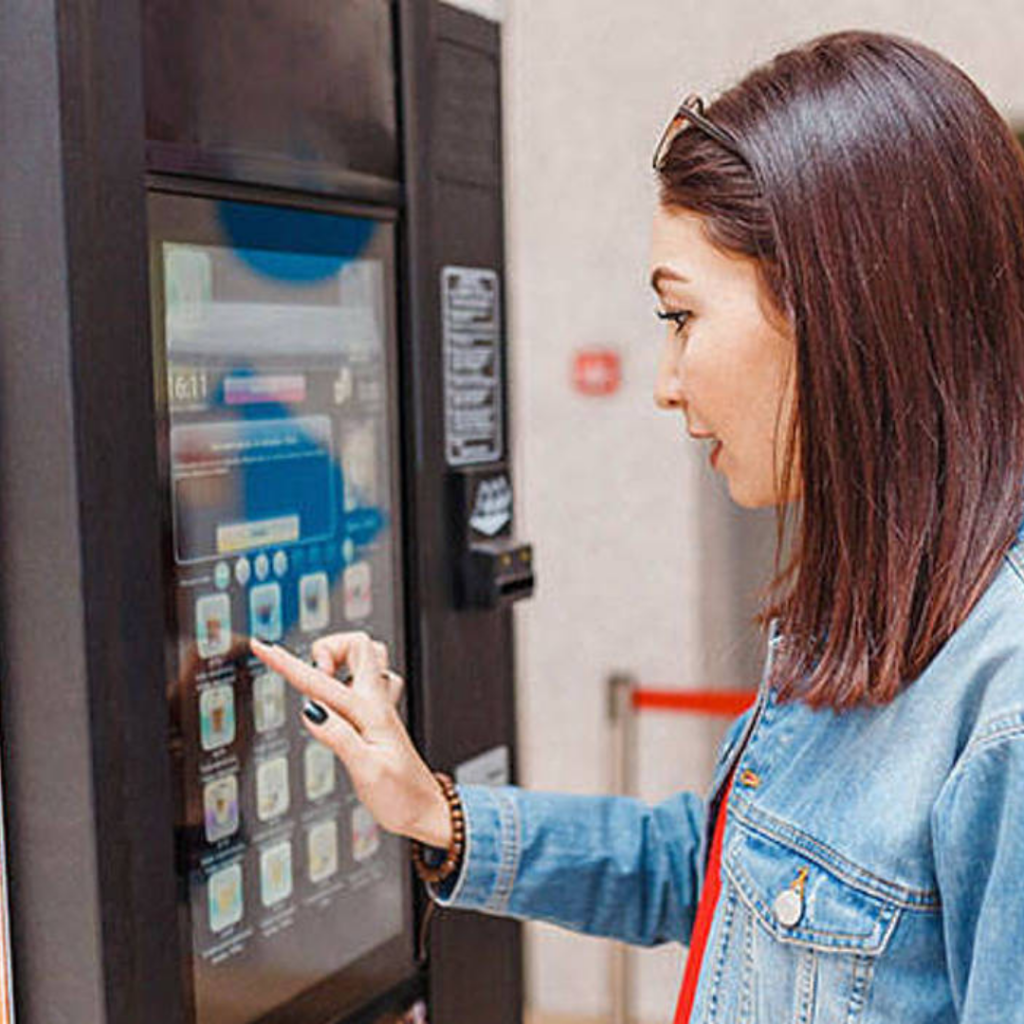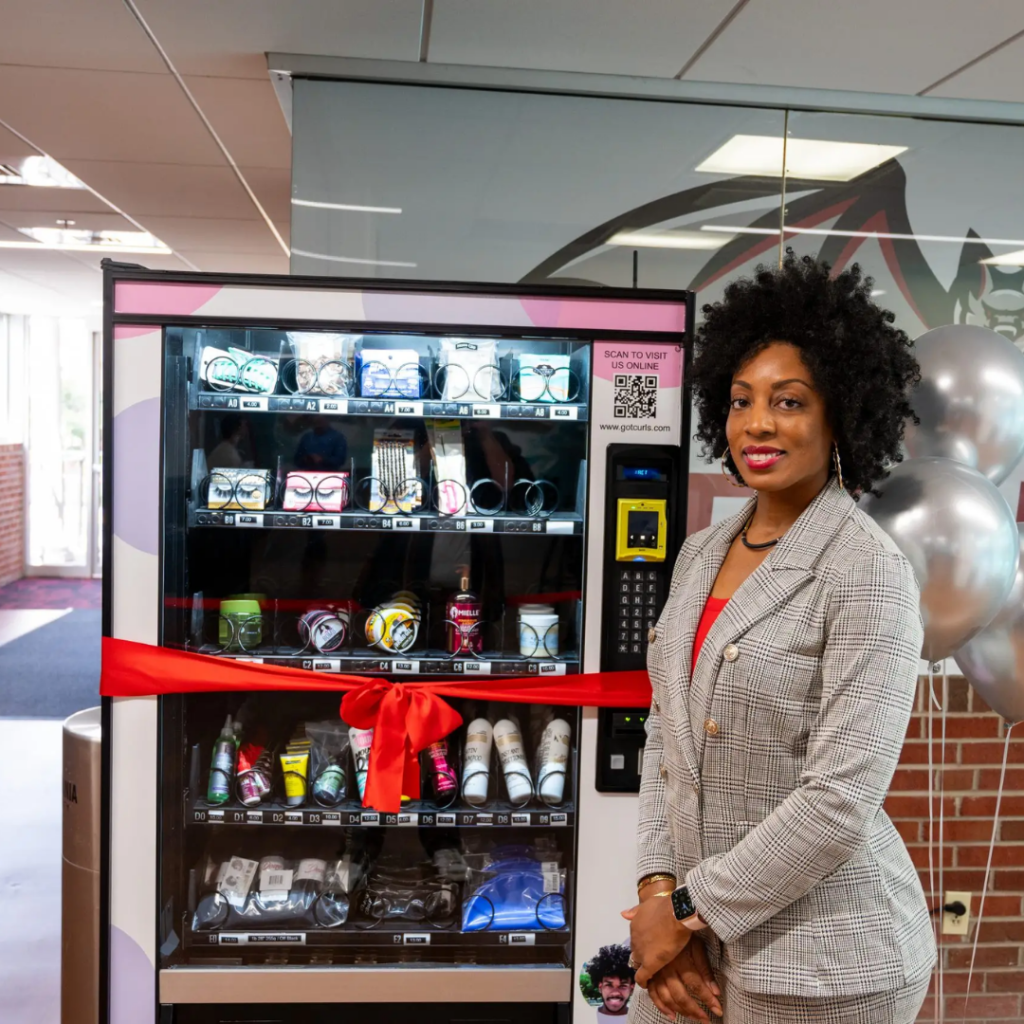Export ready American built machines in stock, shipping from Miami
Are Ramen Vending Machines Profitable | Discover How They Earn Consistent Revenue
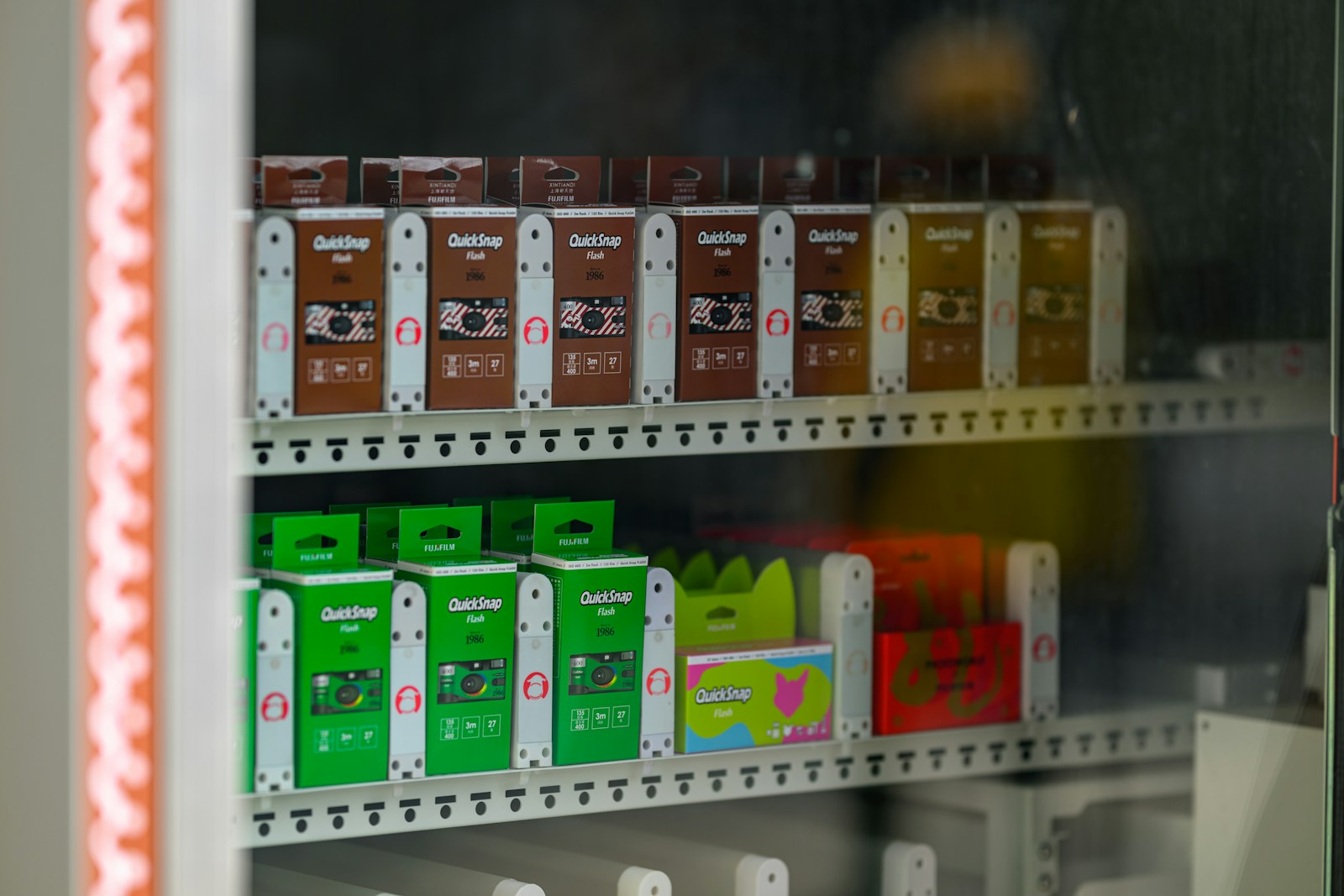
Are ramen vending machines profitable? The short answer is yes, they can be highly profitable when placed in the right location with the right setup. A ramen noodle vending machine is more than a novelty; it is a business model built on steady demand, low labor, and high margins. Across offices, campuses, and airports in the United States, these machines are changing how hot food is sold. Unlike older food vending machines that only store packaged snacks, ramen vending systems prepare fresh, hot meals that attract repeat customers and generate consistent revenue. For operators focused on efficiency and long-term returns, ramen vending offers a clear path to sustainable profit.
The Rise Of Ramen Vending Machines In The U.S.
Across the country, people are choosing convenient meal options that do not compromise on taste or freshness. The ramen vending machine answers that demand perfectly. It delivers the comfort of a restaurant-quality bowl of noodles in a fast, self-service format. Customers simply select a flavor, tap to pay, and watch the system prepare their meal with precision. For operators, it creates a steady revenue stream without the high overhead of staff or kitchen operations.
The technology inside these machines has evolved rapidly. Modern noodle vending machines are built for efficiency and consistency. They come equipped with automatic water boilers, temperature sensors, portioning modules, and even cloud-based systems that report sales and inventory data in real time. These upgrades are making hot-meal vending not only practical but profitable for small businesses and established operators alike.
What Is A Ramen Noodle Vending Machine?
A ramen vending machine is a fully automated food dispenser designed to cook and serve ramen in under two minutes. It stores ingredients such as noodles, broth, and toppings in temperature-controlled compartments. When a customer places an order, the system mixes, heats, and dispenses a complete bowl with precision and hygiene. Depending on the model, some units are compact enough for indoor spaces, while others can serve hundreds of meals daily in busy areas like malls or airports.
There are two main types of ramen vending machines:
- Instant Ramen Vending Machines: These use prepackaged noodle cups that are stored inside the unit. The machine dispenses the cup and adds hot water to prepare the meal instantly. They are affordable, usually priced around $8,000 to $10,000, and ideal for low-maintenance, high-traffic areas such as campuses or waiting lounges.
- Cooked Ramen Vending Machines: These advanced systems prepare meals using stored noodles, sauces, and broth that are heated and mixed before serving. They simulate a small automated kitchen, offering restaurant-like quality. Prices typically range from $12,000 to $18,000 depending on size and feature set.
Both types can be profitable, but their earning potential depends on the chosen business model. Instant models require less maintenance, while heated systems generate higher margins due to premium pricing and better meal quality.
Market Demand And Business Opportunity
Ramen has become more than a college staple. It is now part of mainstream American dining, with consumers viewing it as an affordable, satisfying meal that can be enjoyed anytime. This shift has given rise to automated ramen vending — an ideal way to serve customers where traditional kitchens are impractical. In offices, universities, and apartment complexes, these machines fill a gap for warm, filling food that can be served 24 hours a day.
The growth of new vending machines offering meals instead of snacks shows how much consumer habits have evolved. Hot-food vending is one of the fastest-growing categories in the industry. Customers are willing to pay more for convenience and freshness, which increases revenue potential for operators. A typical ramen noodle vending machine can charge between $6 and $10 per bowl, compared to an average of $2 for snack vending transactions. This alone can double or triple gross revenue per customer interaction.
Moreover, smart technology and systems like Cloud make it easier for operators to manage these machines remotely. They can track daily sales, monitor ingredient levels, and schedule refills or cleanings without being on-site. This efficiency reduces labor costs and maximizes uptime, both key factors in long-term profitability.
Understanding Initial Costs And ROI
To accurately calculate profit, one must first account for the cost of setup, ingredients, maintenance, and location fees. While prices can vary, a basic instant noodle vending machine costs around $8,000 to $10,000, while a larger, heated ramen vending machine with meal preparation functions may cost between $12,000 and $18,000. These figures include the hardware, heating system, cashless payment modules, and installation setup.
Below is a general cost overview for planning and profitability:
- Machine Investment: $8,000 to $18,000 depending on capacity and build.
- Per Bowl Cost: Around $1.50 to $2.50 for noodles, broth, and condiments.
- Electricity: Approx. $30 to $50 per month for operation.
- Maintenance: Basic cleaning and servicing every 7 to 10 days.
- Payment Processing: About 3% fee for cashless transactions.
- Location Fees: Between 10% and 20% revenue share, depending on site agreements.
On average, a single ramen vending machine in a high-traffic area can sell 25 to 50 bowls daily. At an average price of $7 per meal, monthly gross revenue can reach $5,000 to $8,000. With operating costs around 40%, net profits typically fall between $2,000 and $4,000 per month. Most operators recover their investment within 12 to 18 months.
The Three Profitability Drivers
Like any vending business, success with a ramen noodle vending machine relies on three pillars: location, product quality, and technology. Each factor must be optimized for consistent profit and repeat customer engagement.
1. Location
The single biggest determinant of profit is where you place your machine. High-traffic environments with consistent demand for hot meals perform best. Airports, college campuses, hospitals, and office complexes are ideal examples. These locations provide constant exposure and a steady stream of potential customers.
Operators often analyze foot traffic and usage patterns before committing to a site. Tools like Cloud management can help by tracking performance data across machines and identifying the most profitable areas. The goal is to find a balance between accessibility, utility costs, and commission agreements with site owners.
2. Product Strategy
Choosing the right menu can make a major difference in sales volume. A strong product mix should include a few classic flavors like miso, tonkotsu, and shoyu along with optional spice levels or add-ons. Machines that offer choice tend to drive repeat business because customers can personalize their meals. Ingredient turnover is also important — stock should move quickly to maintain freshness and reduce waste.
To maintain a low cost of goods, operators often buy bulk dry noodles and portion-size seasoning packets. These have long shelf lives and can be stored efficiently inside the machine. This method helps preserve flavor while keeping the per-bowl cost low, which increases margin.
3. Machine Technology
Smart vending technology is what makes modern ramen vending possible. Advanced machines can track water temperature, pressure, and ingredient levels in real time. Cashless payment systems allow faster transactions, while smart sensors alert operators to low stock or maintenance needs. Some noodle vending machines even feature self-cleaning modules to simplify upkeep.
Cloud integration also provides flexibility for multi-location operators. They can manage inventory, run promotions, and monitor sales remotely without additional staff. This kind of automation cuts overhead and ensures the machine performs reliably day after day.
Real Profitability Scenarios
Let’s consider a practical example. Suppose an operator installs a ramen vending machine in a college dormitory with 500 students. The machine costs $10,000 and sells an average of 35 bowls daily at $7 each. That equals $7,350 in monthly sales. After deducting product costs, location fees, and processing charges, net profit could reach $2,500 to $3,000 per month. In this case, the operator could recover the full investment in less than a year.
In another case, a corporate office installs a heated ramen noodle vending machine that offers premium flavors for employees and visitors. Though the machine costs more upfront, the higher price per meal and consistent office demand create a steady revenue stream. The result is similar ROI but with stronger long-term growth potential due to brand reputation and convenience factor.
Operational Tips And Long-Term Growth
Maintenance and consistency play a large role in keeping profit margins stable. Operators should clean machines weekly and inspect internal components monthly. Keeping the machine stocked and visually appealing also encourages repeat purchases. Regularly updating menu options or introducing new flavors helps maintain customer interest.
Another growth driver is financing. Many new entrepreneurs start with one or two ramen vending machines through leasing programs that minimize upfront cost. Once the first location proves successful, they scale across multiple venues. The combination of financing and cloud management tools makes it possible to expand efficiently without adding labor or logistics burden.
Conclusion
Ramen vending is one of the most exciting opportunities in modern automated retail. A ramen noodle vending machine brings together the appeal of comfort food, reliable automation, and high return potential. Operators who choose the right machine, the right location, and the right product strategy can generate consistent income year-round. With margins reaching up to 60 percent and short payback periods, ramen vending is proving that hot meals — not just snacks — are the future of vending in America.

